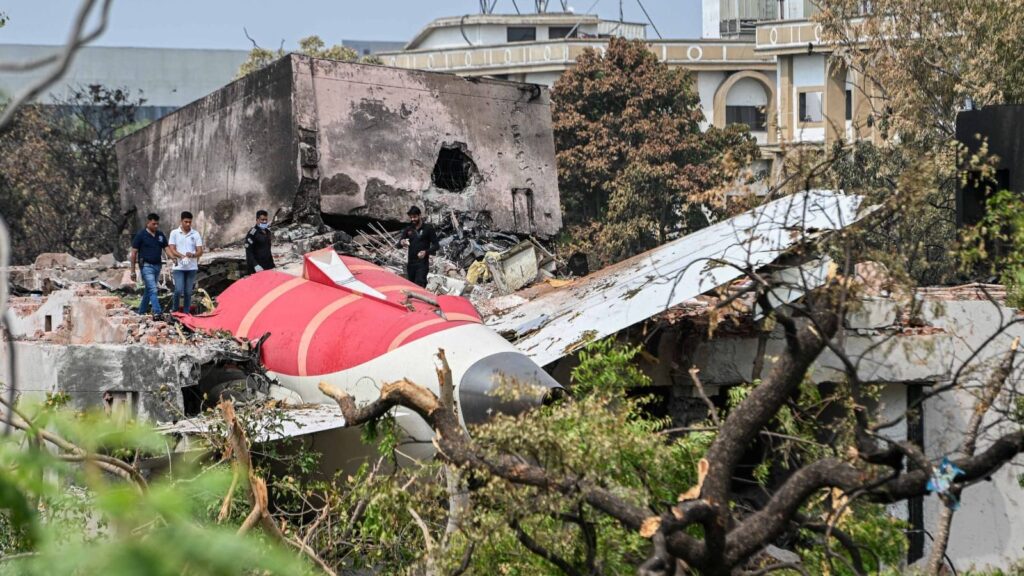970x125
Air India and its low-cost airline arm Air India Express have completed the precautionary inspection of the engine fuel control switches’ locking mechanism on all their Boeing aircraft, and no issues were found with the mechanism in any of the planes, the Tata group airline said Tuesday.
970x125
As mandated by aviation safety regulator Directorate General of Civil Aviation (DGCA), the checks were conducted on Air India’s Boeing 787 aircraft and Air India Express’s Boeing 737 aircraft.
“In the inspections, no issues were found with the said locking mechanism. Air India had started voluntary inspections on 12 July and completed them within the prescribed time limit set by the DGCA. The same has been communicated to the regulator. Air India remains committed to the safety of passengers and crew members,” Air India said.
With the investigation into the June 12 crash of an Air India Boeing 787-8 aircraft focusing on the transitioning of the engine fuel control switches from ‘RUN’ to ‘CUTOFF’, the DGCA on July 14 ordered the inspection of the switches’ locking mechanism on most of the India-registered Boeing commercial aircraft by July 21 in line with the Special Airworthiness Information Bulletin (SAIB) issued by the US Federal Aviation Administration (FAA) in December 2018. The SAIB was regarding the potential disengagement of the fuel control switch locking feature.
Air India had already initiated a voluntary check of the switches’ locking mechanism on its Boeing 787 fleet on July 12, after the preliminary report into the AI 171 crash was released.
A number of aircraft models were mentioned in the SAIB, including variants of popular models 787 and the 737 that are operated by Indian airlines. Air India operates the 787s, while Air India Express, Akasa Air, and SpiceJet operate variants of the 737. Air India also operates Boeing 777 aircraft, but they were not mentioned in the SAIB and therefore, are not under the scope of this DGCA order. IndiGo also operates a damp-leased 787, but that aircraft is not registered in India.
The preliminary investigation report from India’s Aircraft Accident Investigation Bureau (AAIB) said that the Air India plane crashed after both its engines were starved of fuel as the two fuel control switches transitioned from ‘RUN’ to ‘CUTOFF’ position within a second of each other moments after lift-off.
Story continues below this ad
The DGCA order came after a few Boeing aircraft operators, mainly those overseas, initiated voluntary inspections advised in the SAIB. A few foreign carriers, including Abu Dhabi-based Etihad, have begun voluntary checks of the fuel control switches on their 787 fleets despite the FAA and Boeing notifying operators of 787 jets that the fuel switch locks on the aircraft are safe and no further action is needed.
Experts say accidental movement of the switches—used to allow and cut fuel supply to the aircraft’s engines—is not quite possible. The spring-loaded switches have brackets on either side to protect them and the locking mechanism requires the pilots to lift the switch up before moving it between either of its two positions—RUN and CUTOFF. In view of the Air India crash, there were calls from various quarters in India and abroad for the checks recommended in the 2018 SAIB to be conducted to ensure that fuel control switches on Boeing aircraft are functioning as they should.
The preliminary report into the crash of the Air India 787-8 had mentioned this specific SAIB, which was issued after a few 737 operators said that some fuel control switches were installed with the locking feature disengaged. Various Boeing aircraft, including the 787s, have fuel control switches similar to those on the 737s. At the time, the FAA had said that the concern was not an unsafe condition, but had advised operators of various Boeing models to inspect the switches. As the SAIB was only advisory and not mandatory, Air India had not carried out the inspection on the ill-fated aircraft. Moreover, the throttle control module—which houses the fuel control switches among others—was last changed in 2023 on the plane, and no defect related to the switches was reported since.
“Inspect the locking feature of the fuel control switch to ensure its engagement. While the airplane is on the ground, check whether the fuel control switch can be moved between the two positions without lifting up the switch. If the switch can be moved without lifting it up, the locking feature has been disengaged and the switch should be replaced at the earliest opportunity,” the SAIB had advised operators of various Boeing aircraft models.
Story continues below this ad
There is considerable speculation on whether the switches were flicked by one of the pilots—inadvertently or otherwise—or whether the transition signal to the system was due to any technical, mechanical, or software issue. To be sure, the report does not state that either of the pilots physically moved the switches, just that they transitioned from RUN to CUTOFF. The investigators would now focus on unearthing the cause behind the transitioning of the fuel control switches. The report also did not issue any recommendation to other operators of the Boeing 787-8 aircraft and its GE engines, suggesting that at this stage, the investigators do not have a reason to believe that there was any issue with the plane or its engines.
970x125

